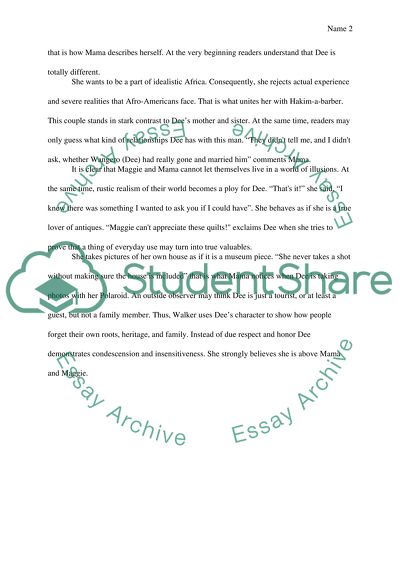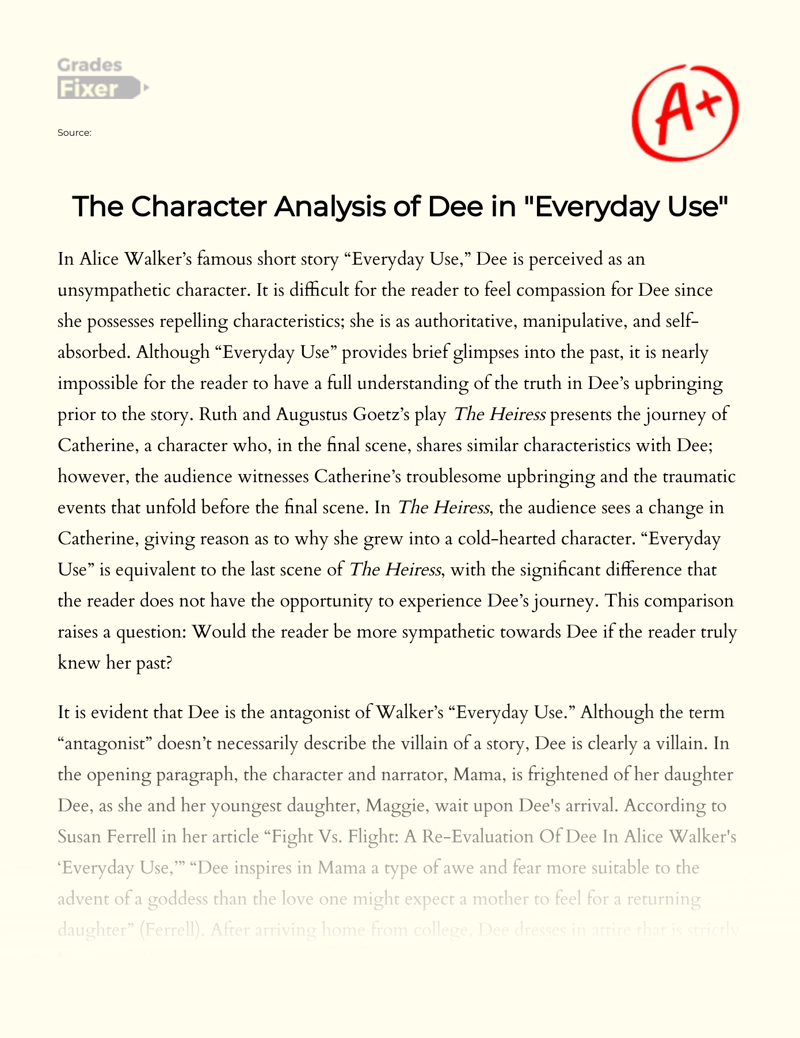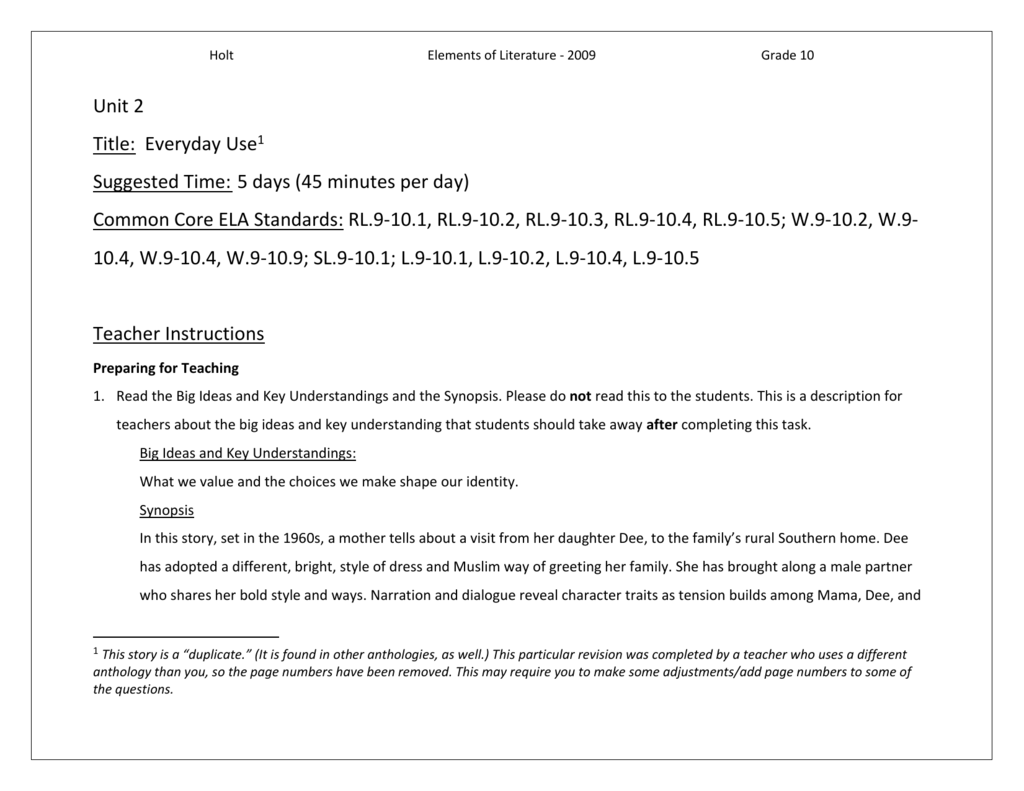In Everyday Use the Author Describes Dee Wangero as Determined
There are two different aspects of a story that create its setting. Words lies other folkss habits The.

Pdf Analyzing Everyday Use By Alice Walker Rawezh Ibrahim Academia Edu
Mama describes television shows in which a child who has made it confronts her parents.

. Dee is educated worldly and deeply determined not generally allowing her desires to be thwarted. The representation of the harmony as well as the conflicts and struggles within African-American. Her other daughter Dee has gone off to the university and has.
Other times Mama refers to her as Dee Wangero. Johnson the protagonist of the short story Everyday Use is the mother of Maggie and Dee. In her short story Everyday Use Alice Walker takes up what is a recurrent theme in her work.
Dees judgmental nature has affected Mama and Maggie and desire for Dees approval runs deep in both of themit even appears in Mamas daydreams about a. In Everyday Use Alice Walker argues that an African-American is both African and American and to deny the American side of ones heritage is disrespectful of ones ancestors and. Dee demands to take various household objects with her to decorate her apartment including.
However Farrell thinks the opposite of Cowarts reaction and argues Dee is a determined bold woman that has the willingness to fight for her culture Farrell 179. On these shows Mama says the meeting is pleasant warm and loving. Sisters from Story Everyday Use Maggie and Dee sisters in short story Everyday Use couldnt be more different in their.
Dee is the object of jealousy awe and agitation among her family members while as an individual she searches for personal meaning and a stronger sense of self. The historical time period and the physical surroundings of the characters. When Mama wont let her have the quilts to display she becomes furious.
In Alice Walkers insightful short story Everyday Use the importance of the present is favored over a trivial. While Dee believes that her embrace of her African roots and the African name Wangero is a form of resistance to racism her new-found identity comes across as a self-indulgent. Near the end of Everyday Use the mother who is the tales narrator realizes that Dee aka Wangero is a fantasy child a perpetrator and victim of.
The butter churn top and dasher a bench and. Baker and Charlotte Pierce-Baker Dee or Wangero is called a goddess. Everyday Use takes place in the rural south of.
After highlighting a few passages from the. A greeting sometimes used by Arabic speakers. In the story Everyday Use by Alice Walker the value of ones culture and heritage are defined as a part of life that should not be looked upon as history but.
In Everyday Use the author describes Dee Wangero as determined to stare down any disaster in her efforts. In Everyday Use we meet a mother and her two daughters. Up to 24 cash back DeeislighterthanMaggiewithnicerhairandafullerfigureShesawomannowthoughsometimesIforget.
Which sentence about Maggie provides contrast to these traits. In the essay Stylish vs. After dinner Dee Wangero went to the trunk at the foot of my bed and started rifling through it.
Mama still lives with Maggie in a small poor town. Maggie hung back in the kitchen over the dishpan. Sacred in Everyday Use written by Houston A.
Right at the beginning of the story the. Out came Wangero with two quilts. The author varies the characters name to underscore the confusion Mama is experiencing regarding her daughters new identity.
Everyday Use by Alice Walker 31 Mrs. Everyday Use Maggie Character Analysis. Everyday Use by Alice Walker.
What Is The Point Of View Of Everyday Use By Alice Walker 380 Words 2 Pages.

Discuss Character Development In Everyday Use Essay

The Character Analysis Of Dee In Everyday Use Essay Example 1247 Words Gradesfixer

No comments for "In Everyday Use the Author Describes Dee Wangero as Determined"
Post a Comment